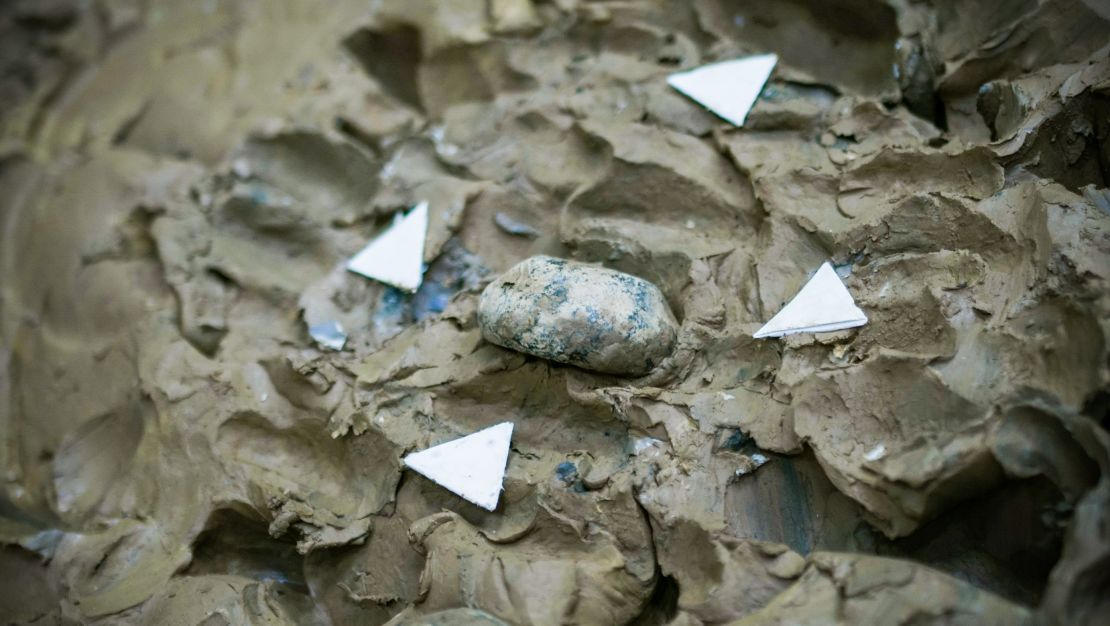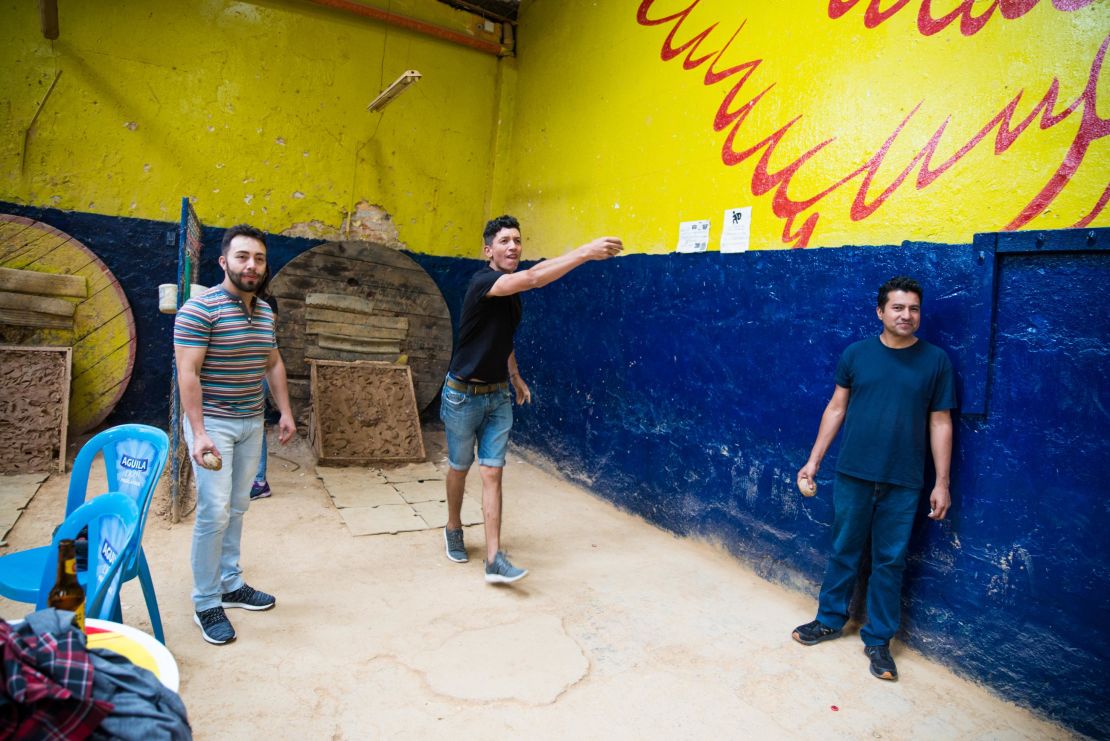Steel projectiles, gunpowder and lots and lots of beer. It sounds like a recipe for disaster. But in fact, they’re the components needed to play the national sport in Colombia: tejo.
The game originated amongst Colombian indigenous groups around 500 years ago and was declared the Latin American country’s sport in 2000 under Law 613.
Popular for its boozy nature, some tejo purists are trying to banish the beer and get the sport into the Olympics.
Also occasionally known as “turmequé,” after a town situated in the Boyacá department, its exact origins are hard to pinpoint because of a lack of records.
Tejo – ‘an inherited treasure’

“Tejo is unique, both for Colombia and Turmequé, because it is an inherited treasure from our aboriginal ancestors. It’s an achievement that it was not wiped out by the colonial conquistadors, and it makes up a unique link between our past and our present,” said Yoani Vela Bernal, mayor of Turmequé.
Initially the game involved stones or small pieces of wood, and the Spanish substituted the stones and wood for lead disks.

It’s not actually known when gunpowder was added into the game, although some believe it was during the “La Violencia” era, a decade of bloody conflict between the two main political parties which ended in 1958.
The sport is played either outside or in bustling, noisy bars – with copious amounts of alcohol. It’s even taught in some schools, although without the alcohol. Players can compete individually or as part of a team, which can number as many as six people.
How to play tejo
Players take turns throwing a heavy steel disk, or puck, which weighs more than half a kilogram (1.1 pounds) at a board about 18 meters (almost 20 yards) away.
The board, which measures 1 meter by 1 meter, is covered with clay and perched at a 45-degree angle. On the board lies a metal ring, the bocín. The aim is to land the puck – the tejo – in the center of the ring, for six points.
Around the ring are triangular paper pouches – mecha – filled with gunpowder. Hit one of these and you’ll gain three points and a roar from your teammates. There’s no mistaking when you’ve hit the target; a bang goes off, thanks to the explosive gunpowder.
Hit a mecha and land a bull’s-eye – or moñona – in the bocín, and you’ll gain the maximum nine points.
Participants can expect to get dirty, either by being splattered with clay from neighboring fields, or from having to dig out their tejo from too-sticky clay. And don’t get too close to the targets. Although accidents are rare, according to the Tejo Federation, it’s still a dangerous game.
Growing international interest

Yadira Ramírez is the owner of tejo hall Los Bucaros, in the Santa Fe neighborhood of Bogotá, Colombia’s capital city.
The hall – which operates from 10 a.m. to 10:30 p.m.and has just reopened following a lengthy pandemic closure – is particularly busy on Fridays and in recent years had seen an influx of tourists.
Although the business had seen a drop in international visitors because of the pandemic, Ramírez says locals have been desperate to return to their national sport.
“Every day we have from three to five groups of foreigners, with as many as 20 people in each group,” Ramírez said in 2018, before the pandemic. “But Friday we have the most people here. Many tourists don’t play, and they loan the court mostly for drinking beer.
“Many of the tour operators in Bogotá will use my hall as the last stop on the travel circuit, after graffiti tours, fruit-tasting and tours of La Candelaria (the old town).”
Tejo can be as casual as a post-work outing or as serious as competing in the torneos relampago – or lightning tournaments. Competitors can win trophies and money, with household items being given to finalists.
The vast majority of Colombians have played tejoat some point in their lives, and the sport is gradually gaining popularity further afield in Venezuela, Ecuador and Panama. Some teams even come from the US to play their Colombian rivals.
Fall is the height of tejo season, with the national tejo championships taking place in Tumenqué in October. Because of the pandemic, 2020’s tournament was canceled and it is still unclear whether this year’s will go ahead.
“It’s the biggest professional event,” explains Bernal. “But there is also a display of cultural richness to show outsiders our traditions.”
Dialing down on the drinking

Although tejo is known for being played under the influence, and many a team is sponsored by Colombian beer companies, some purists are trying to steer the sport’s image away from its boozy reputation.
Bernal says these aficionados are one day aiming to get tejo played as an Olympic sport because it has “the high competitiveness needed to do so.”
Traditionally played as a male, working-class sport, often with urinals dotted around the perimeter of outdoor tejo fields, the game is opening up to women and Colombia’s elite, with more female leagues emerging in Colombia and tejo halls opening up in middle-class neighborhoods in Bogotá.
The highest level of tejo in Colombia is the National Federation of Tejo, and there’s a now a separate federation responsible for bringing tejo – albeit a miniature, nonexplosive version – into schools, as well as a move to involve seniors.
This article was first published in November 2018 and was updated and republished in September 2021.











